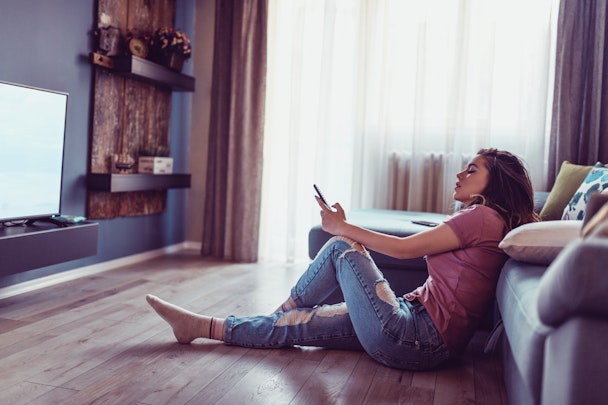Making sense of changing consumer media consumption during the pandemic
We have all experienced sudden dramatic changes in our lives, so it’s no surprise that consumer media consumption has also been turned upside-down. Many of the new behaviours we’re witnessing are trends that were bubbling up under the surface and have been fast-tracked by the crisis.

Brands need to react to these changes in behaviour and consumption in order to stay relevant and, ultimately, survive. At least thing is certain in these unpredictable times: there will be no swift return to our previous normality. Looking ahead, here are the four key consumer media trends businesses have to adapt to sooner rather than later.
High numbers return to social media as key source of news
Lapsed or occasional social media users are flocking back as a way to keep in touch and augment their news sources. According to Global WebTrends, 30% of those surveyed are using Facebook for information about coronavirus, with 19% turning to Twitter and 18% to YouTube.
There was previously a lot of talk of millennials being turned off Facebook. Now a whopping 50% are using it for information about the virus (compared to an estimated 40% for WhatsApp, Instagram, and YouTube). While Facebook may have been making a conscious effort to move away from news before the crisis, 39% of people of all ages are now turning to social media to read more news stories.
Bear in mind, however, that another study of US and UK consumers found that 40% of people are concerned about inaccurate Covid-19 information. The exception, however, is that there seems to be widespread trust in the reported figures of infection and mortality rates.
Online video goes mainstream
With more time on our hands and a need for stimulation, we are all consuming more video content — and longer-form content is doing particularly well. Overall, 38% are watching more online video.
Some of the real heroes of lockdown have been fitness gurus providing videos to keep the nation fit (and entertained!). YouTube has come into its own at this time, with influencers like Joe Wicks and Mr Motivator seeing millions of viewers and new interest.
Meanwhile, YouTube and Instagram are seeing a big increase in people watching live video content. Instagram users are showing renewed interest in this format for everything from live cooking demos to meditation masterclasses. Similarly, with music venues closed and festival season postponed, DJs are taking to Facebook for a host of listen live parties. The genie seems out of the bottle with video and it may well be a trend that carries on when lockdown ends.
It's not all about longer-form content, though. TikTok is also offering lighthearted distraction and snackable content. There were 315 million installs across Apple's App Store and Android's Google Play in the first three months of 2020, according to the analytics firm Sensor Tower.
Brands supporting people are rewarded
The new mood of communality in the country is perhaps best symbolised by the weekly clap for carers. Businesses have followed suit in this time of crisis. So many companies have pivoted at short notice to help people in need, whether it's local caterers providing meals for NHS workers or Dyson producing ventilators.
There are encouraging signs for advertisers in this new world. According to Kantar, 92% of people still think brands should advertise, but 77% expect these same brands to be helpful in the new everyday life. In other words, businesses need to think about how they can be part of the solution at this time. Those that promote their work in this area — rather than just focusing on selling — will be rewarded. Those that react accordingly are building a lot of goodwill and are best placed to remain relevant when the crisis begins to subside.
Celebrities as everyday people
While footballers and some celebrities faced some stick at the beginning of the crisis, some football clubs are now showing the human faces of the previously god-like players. The recent Liverpool FC Zoom team meeting, for instance, was broadcast to fans. This virus has been a great leveller and seeing Mike Jagger’s living room at the recent One World Together At Home concert really helped to bring these stars off a pedestal. With many peoples’ financial futures in doubt, conspicuous shows of wealth will hit a wrong note.
New ads, such as the latest EE commercial with an earnest Kevin Bacon, reflect this new presentation of celebrities as everyday people trying to help. Brands will be likely to continue to use their star talent in a much more considered way in the future. The real celebrities of this crisis, after all, are doctors, nurses, and Captain Tom.
We’re all going about our lives differently and there is no sign this is likely to change in the near future. Brands that react accordingly and respond to these new behavioural trends will be best placed to weather the storm — and come out of it in a stronger position.
Mike Fantis, vice president, DAC
Content by The Drum Network member:

DAC
DAC is one of the largest independent digital media agencies in North America, with a growing international presence and offices in the US, Canada and Europe. We...
Find out more